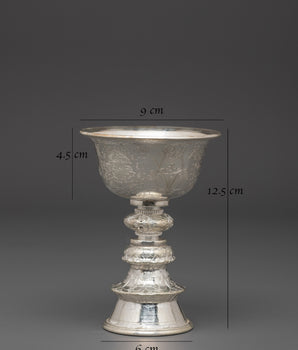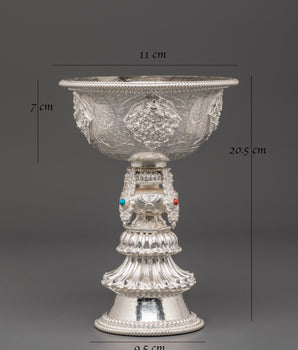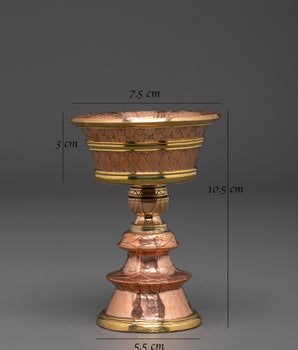Butter Lamps
Authentic Nepalese Craftsmanship – Free Worldwide Shipping
Our Butter Lamp Collection features a diverse range of beautifully handcrafted lamps, each created by skilled artisans in Nepal. In Buddhist tradition, lighting a butter lamp symbolizes the dispelling of darkness and ignorance, illuminating the path to wisdom and enlightenment.
From simple copper pieces for daily practice to ornate silver and gold-plated designs for special offerings, our collection caters to all practitioners — whether for personal meditation spaces or grand temple rituals.
Copper Butter Lamps
Durable and affordable, copper lamps are perfect for regular use. Their warm metallic tone resonates with traditional Himalayan altar aesthetics.
Silver Butter Lamps
Elegant and pure, silver lamps are often used for special ceremonies or as offerings to higher deities. Their reflective surface enhances the light’s brilliance.
Gold-Plated Butter Lamps
Luxurious and radiant, gold-plated lamps symbolize the supreme offering and are often reserved for high spiritual occasions or temple use.
Size & Price Range
Evamratna offer the widest collection of butter lamps in Nepal, ranging from small, single-offering lamps perfect for home use to large, multi-tiered ceremonial lamps. Sizes start from a few inches in height to over a foot tall, with a price range that accommodates both beginners and dedicated practitioners.
Why Choose Our Butter Lamps?
-
Authenticity: Handcrafted in Nepal using traditional methods.
-
Variety: Copper, silver, and gold-plated designs to suit all needs.
-
Range: Sizes and prices for every practitioner, from simple daily lamps to ceremonial masterpieces.
-
Free Worldwide Shipping: Delivered safely to your home or temple.
-
Spiritual Accuracy: Designed according to traditional Buddhist symbolism.
Your cart is currently empty.
Start Shopping

































































